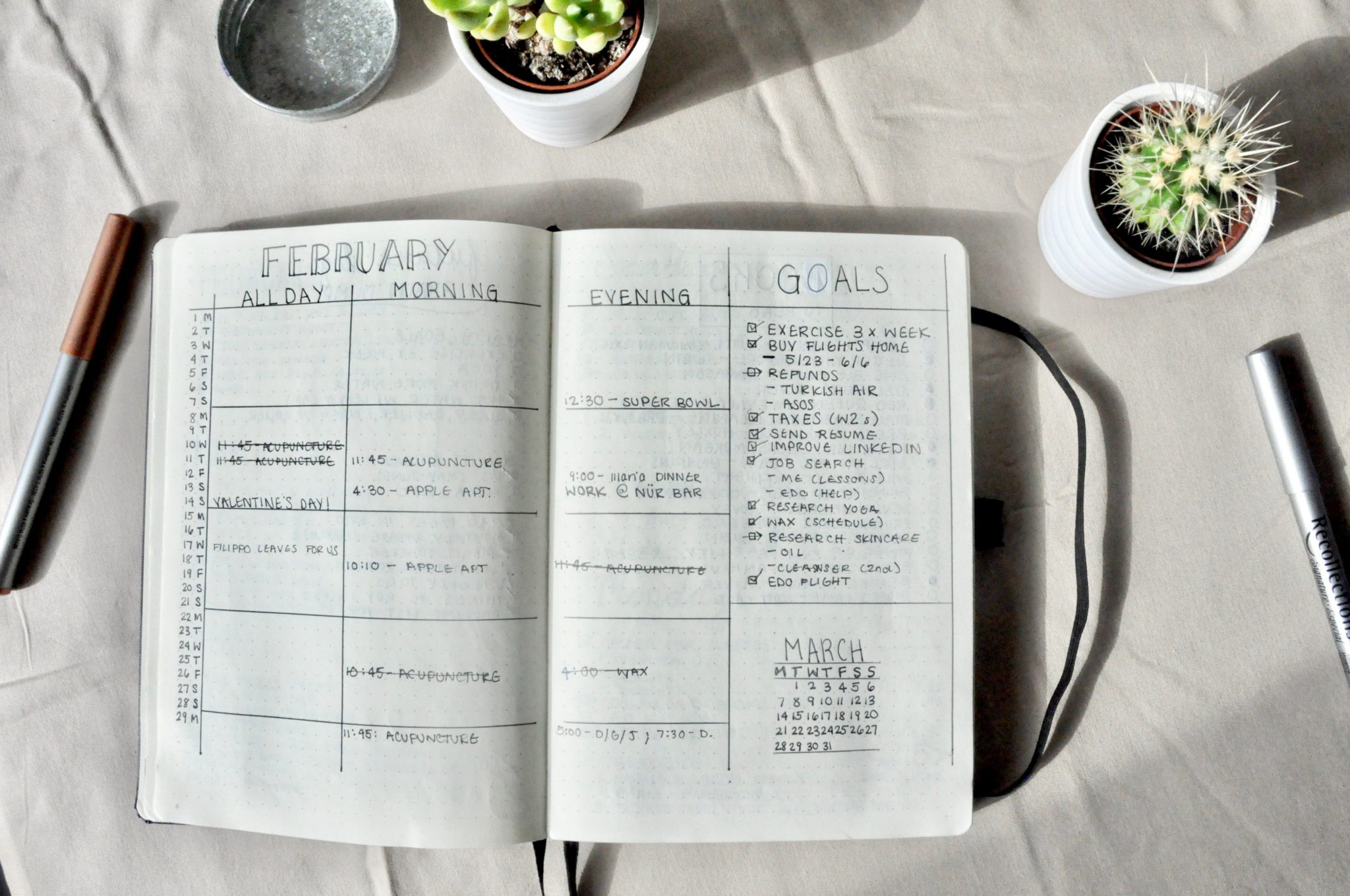Bullet Journal Guide: How to use the bullet journal system
 Without a doubt, my bullet journal was the best thing to happen to me in 2016, productivity-wise. It allows you to use your time much more effectively, stop procrastinating and find a organization solution that works for all of the disparate parts of your life. At the same time, bullet journalling becomes addictive and you're thrown into a large community of users when you start one. I love the flexibility of this system and think it's a great tool for almost anybody. Because the bullet journal system still relatively unknown, I'll explain how it works, give examples of my 2016 and 2017 journals, and list some ways to use it.
Without a doubt, my bullet journal was the best thing to happen to me in 2016, productivity-wise. It allows you to use your time much more effectively, stop procrastinating and find a organization solution that works for all of the disparate parts of your life. At the same time, bullet journalling becomes addictive and you're thrown into a large community of users when you start one. I love the flexibility of this system and think it's a great tool for almost anybody. Because the bullet journal system still relatively unknown, I'll explain how it works, give examples of my 2016 and 2017 journals, and list some ways to use it.
How a bullet journal works
The biggest strength of the bullet journal is that it offers a flexible solution to procrastinators and anyone who needs to keep all of their thoughts in one place. It does this primarily by collecting all of important information from your life in one notebook and cataloging it in an index. Any entry you make in the journal, you write a note about at the front of your journal, in the index. This is why your notebook should have numbered pages (the most popular notebook of choice being the Leuchtterm1917).


The sections that people divide their journals into differ on a case-by-case basis, but generally you'll have a future log, monthly overview and daily logs. A future log takes a look at the upcoming months and is where you note any important dates, events, or tasks that need to be done within a specific month. A monthly overview is usually in calendar form and holds specific appointments for that month, goals, tasks or anything that covers the entire month. From there, you move on to daily logs that help you plan out your individual days. I put meetings, reminders, notes, and tasks in my dailies, which are differentiated by symbol (included in the key above). This whole setup is very flexible however, and changes with trial and error.


The best part of the bullet journal system, in my mind, is its ability to add collections into an agenda-like set up. Any lists, journal pages, drawings, notes, or entries not included in your monthly/daily spreads are called collections. These can truly be anything you want and enable you to effectively use your journal for work or your personal life.


Possibilities
Other than working as a basic datebook and planner, a bullet journal provides you with so many options for use. Some of the collections that you can include are:
- Yearly goals and overview
- Running to-do list
- Gratitude journal
- Daily tracker (a way to reinforce and track specific habits while providing accountability)
- Meal planning
- Monthly budgeting
- Stats trackers (blog, social media)
- Ongoing lists: bucket lists, travel destinations, book lists, shopping wish lists, future activities
- Travel diary (when traveling I write journal entries for each day so I can look back on past trips and read exactly what I did)
- Collection of yearly memories (a way to look back on what I did for the past year)

Why I love it
- It’s a unique journal in a sea of Kate Spades and Lily Pulitzers, that represents your unique personality and needs
- You can use any type of notebook setup
- Keeps digital and paper info all in one place (iPhone notes, calendars, to do lists, journal entries, notes, bucket lists)
- Opportunity to be creative with drawing, designing, and lettering
- Flexible: it grows and changes the more you use it and you can constantly improve on your personal system

What to do next
If all of the reasons above have convinced you that this is a big game changer, there are plenty of further resources to check out. Before starting one, I really recommend heading to bulletjournal.com where the original creator of the system gives a great overview (with video) and has examples of real journals. You also tend to fall down a rabbit hole of Pinterest, Instagram, and BUJO blogs (I love Boho Berry for her artistic ability and clear descriptions) while looking for inspiration and spend way too much time and effort to make yours look exactly like the professionals'. I would say to start slow and add in embellishments as you go, as long as that doesn't end up discouraging you from using it as a productivity tool.
Would you use a bullet journal or are you a fan of the more classic agenda/diary approach? If you do use one, what are your favorite collection spreads? I'm always looking to add more.

